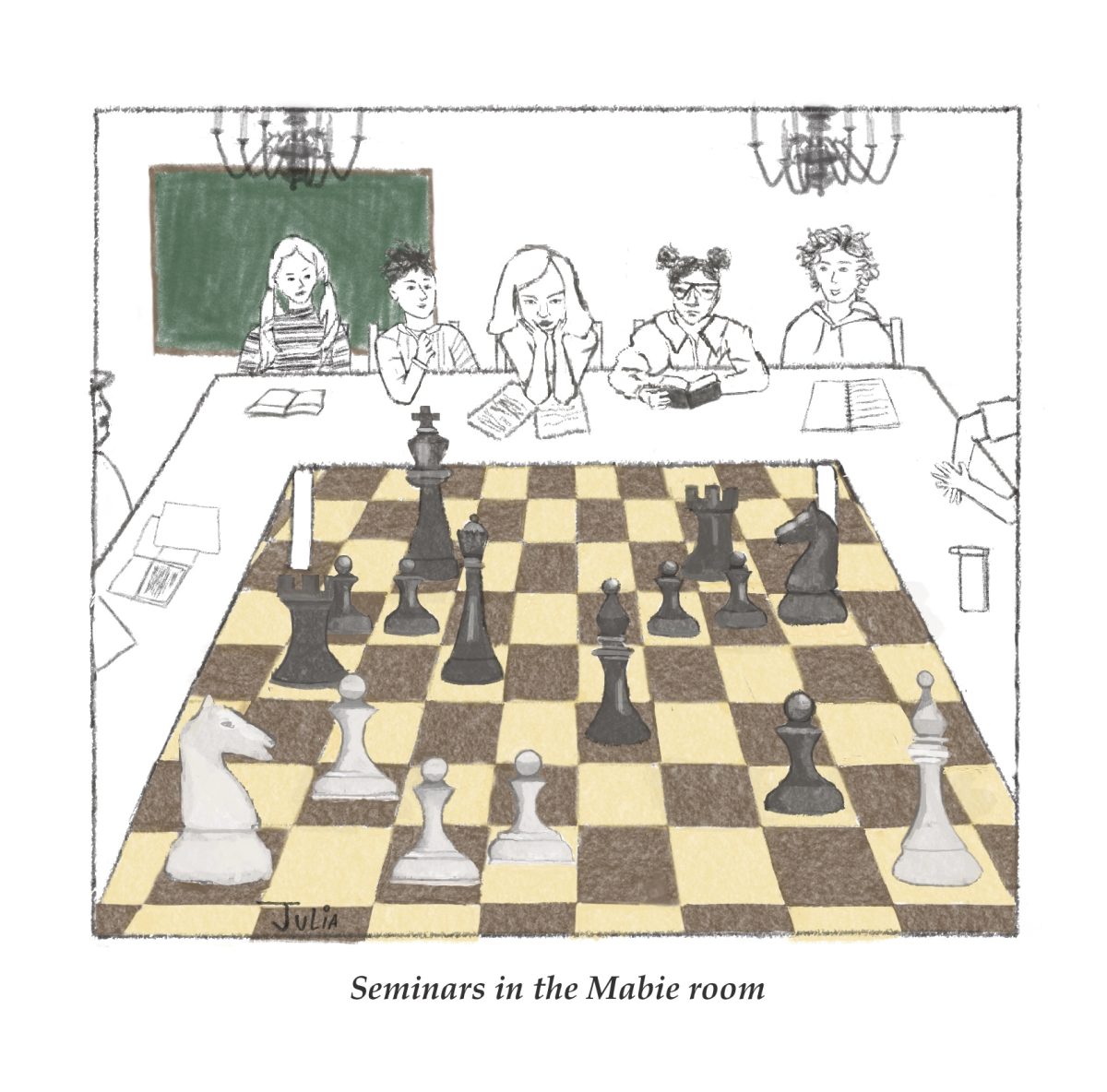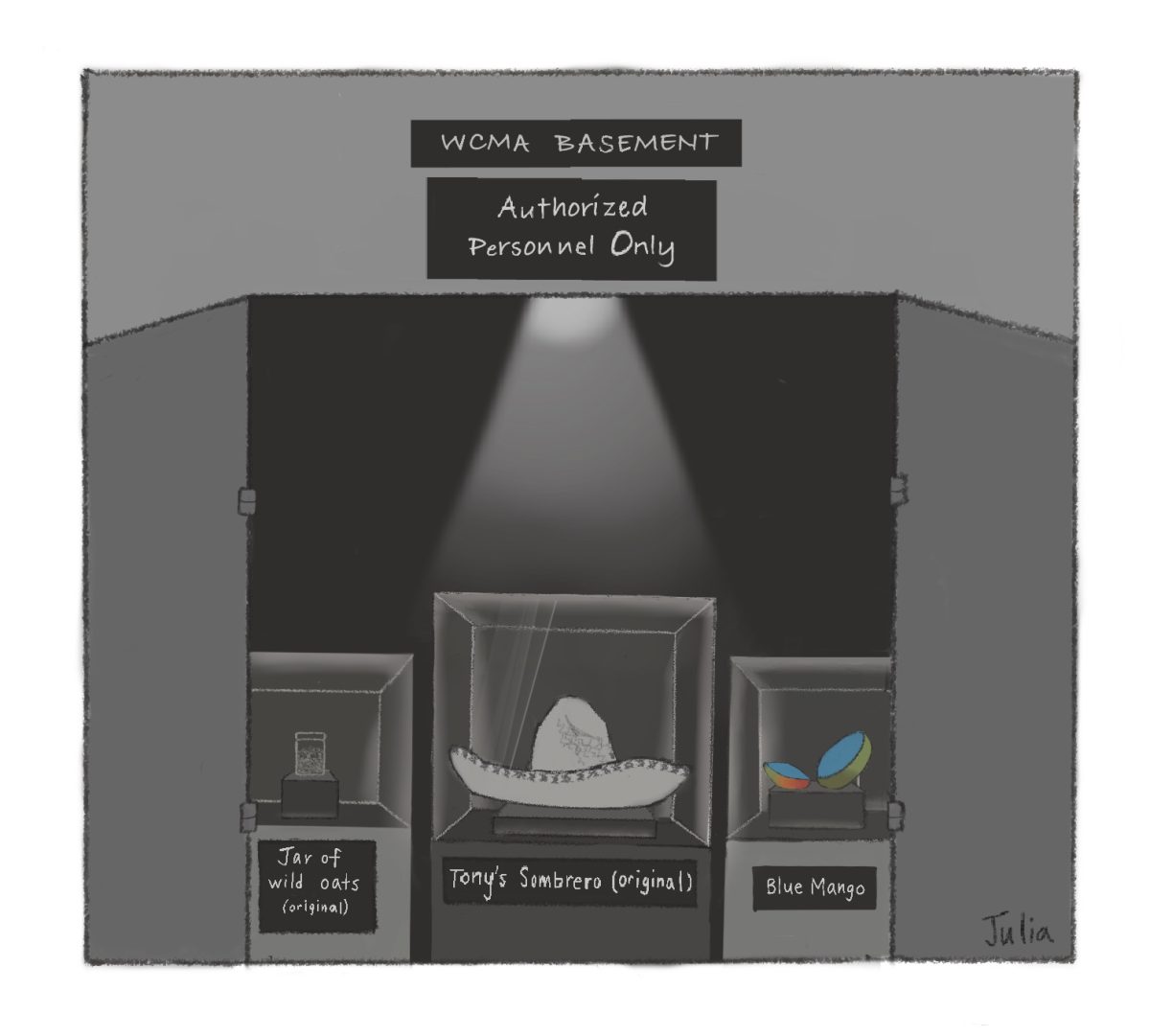This is my favorite time of the year. Autumn and its cooler weather have finally (almost) arrived. The leaves on the trees are changing, pumpkins and squash are ripe and ready to be harvested, and it’s time to start preparations for winter.
It’s also the Jewish holiday of Sukkot, which began this past Friday evening and continues until this coming Friday at sunset. This holiday celebrates the harvest season taking place in much of the Northern Hemisphere at this time of year. The holiday is marked by celebrations of eating and drinking and dwelling in a hut called a sukkah, which is notable for a roof made from branches or other natural items that have been cut from the ground. For Jewish people, it is customary to eat our meals, gather with friends and family, learn religious texts, and even sleep in the sukkah throughout the holiday.
The only problem with this time of year is that, at Williams College, it’s also the beginning of midterm season. This season in the academic calendar calls for integrating what has been taught over the past month as the rest of the semester and its opportunities for learning stretch ahead. It strikes me as a little tragic that, just as we enter this beautiful time of year, now is the time of year that calls for increased focus and time spent indoors. We end up focusing all of our attention on what we need to learn from our classes, drilling and internalizing the information that will ensure success on exams. It can be hard to look up and appreciate things that are beyond us that might also inspire us.
I think that the holiday of Sukkot, particularly two of its central rituals, might offer some insight for navigating this particular season. They involve what are referred to as the four species: a palm branch, two willow branches, three sprigs of myrtle, which compose a lulav, and a yellow citrus fruit called an etrog that are bound together. One ritual is to wave these four pieces of vegetation, turning to the four cardinal directions while standing in place, extending the lulav away from the body and then drawing it toward oneself repeatedly. Following these actions, there is a separate ritual of performing a circumambulation around a room while holding the lulav and etrog. These two rituals signify two different motions: One is a gesture from the outside in, while the second one is tracing the outer edge of the space we are in with our steps.
I recently learned of an interpretation of this practice, based on the teachings of the contemporary teacher of Kabbalah, Rabbi Itche Meir Morgenstern, that I think sheds light on it while also making it more relevant to our experience. It is based on the Jewish mystical tradition that explains that there are two expressions of divine light – or makif, or surrounding light, and or penimi, or penetrating light. Or makif surrounds all things, enveloping them from the outside, not penetrating their insides. It is powerful, intense, expansive, and just beyond our ability to grasp. Or penimi fills all things from the inside, and because of this, it is somewhat diminished, enabling objects to withstand their power and benefit from it. It is divine light that we can internalize and make use of in our lives.
On each day of the holiday of Sukkot, we are able to access different spiritual lights by means of the two rituals described above. By waving the lulav in all directions, placing it outside of our bodies and then bringing it in toward our bodies, we bring those lights into our hearts, internalizing them. This action thus activates the or penimi, helping us to make sense of that energy in our lives. We then perform the circumambulation, walking around a room. By walking along the outside edge of a space, we can activate the or makif, reminding us to touch that which is still beyond us.
This teaching suggests that we must both continuously integrate insights that are accessible to us and then extend for that which is beyond us. The process of internalizing that which is outside of us — whether they be spiritual energies, insights, or skills — is an ongoing process. We integrate that which we have learned, be it in the classroom, in the library, while engaging in spiritual practices, or through the process of living in the world. We must continually integrate that which we learn. And then, after we absorb them and determine how they make sense in our own experience, the next step is to work to touch what is beyond us, to continue learning, to gain new insights and skills, to step outside of the spaces where we study and focus, to encounter the natural world that is bursting with beauty at this time of year, and to allow it to teach us. In other words, our task is to continue to grow. No matter what we have already internalized, there is so much more to take in, both in the classroom and beyond. We must work to integrate what is accessible to us, and then, we must be open to the reality that so much more lies beyond us.
The rituals of Sukkot remind us of this dynamic and provide some guidance for the never-ending process of growth. As we notice the changing of the seasons, may we all continue to expand and deepen what we have received while continuing to reach beyond.
Rabbi Seth Wax is the College’s Jewish Chaplain.






